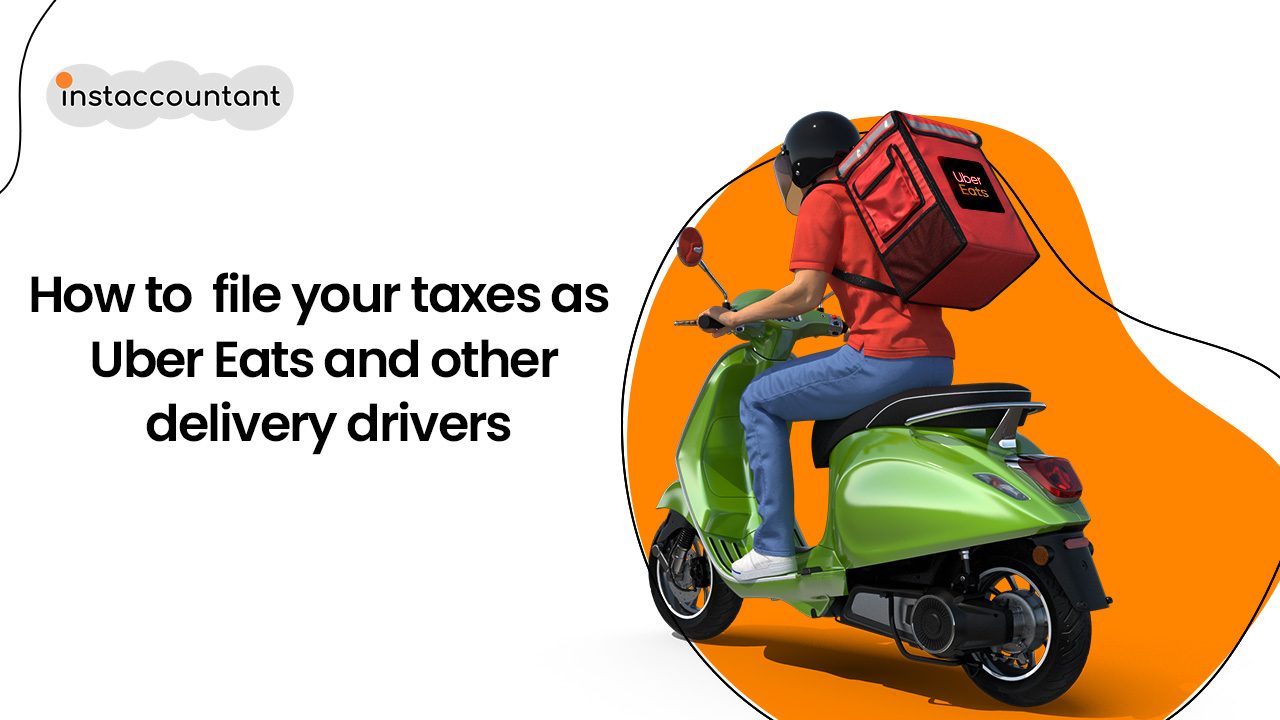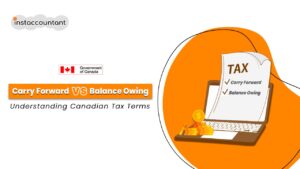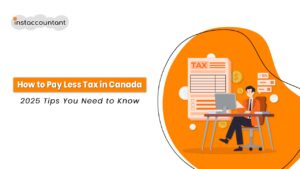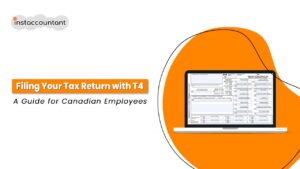Uber Eats, Skip, Doordash and other delivery drivers do a lot of hard work earning their living off of these apps. They have to drive downtown, during the worst hours, or on the loneliest streets in the suburbs. At the end of the year, they deserve to save as many tax pennies as they can. This article is definitely going to help you guys.
File your income tax return as a self-employed individual
According to Canada Revenue Agency (CRA), Uber drivers, Lyft, Uber Eats, Skip the dishes or other ride-sharing drivers are self-employed and are required to file their Canadian income taxes as being self-employed. Since you are not an Uber employee, therefore you didn’t get any T4 from Uber, and you have to file your income tax return as a self-employed individual. You will get income information in different reports or summaries. Uber Eats gives you an annual tax summary, whereas Skip just gives you information on your earnings, and Instacart gives you a T4A.
The first thing is that looking at your earnings, deductions or the expenses information that you get from these companies will depend on what information they will provide. For example, Uber Eats gives the most information in their tax summary related to earnings and deductions.
Uber tax summary information for Canadian drivers (esp. in Ontario)
The first thing that you see is the information on your earnings. You are provided with the gross earnings (which is the real earnings from delivering food to your customers). Then there are Tips, that you collect from customers. Add the gross fare and the tips, that’s the total of your earnings for the period.
The next important thing in the Uber tax summary is the Uber deduction or fees that Uber charges, for each order you deliver Uber is charging its commission. They also provide that amount in the summary which is a very important tax deduction for you.
This is the main information which is very important to us. Then they will also give the number of kilometers you drove on the road, now it depends whether you are using a car or bike or you are walking around the downtown.
What Tax Forms do Food Delivery Drivers File?
As a self-employed, you have to fill in the T2125 form or attach it with your personal Income-tax return (T1). T2125 form particularly is to calculate details on your earnings and your expenses during the year to CRA. The end product of that form is the net income, which is the taxable income. For example, if you made $10,000 as gross income on Uber Eats including your tips, and your deductions were $2000 and all the expenses were $4000, so your net income will be $10,000 – $2000-$4000 = $4000, which is taxable income.
The next thing is “What kind of expenses can you deduct”.
Tax-deductible expenses for rideshare and delivery drivers
As a self-employed person, you can take deductions for your driving expenses that can significantly lower your taxes. It is important for rideshare and delivery drivers to keep track of their expenses. For example, if you have paid for the delivery bag to carry the food, especially during Covid times if you are using any cleaning supplies or any kind of PPE equipment like masks or gloves, face shields, all of these are your business expenses. If you buy a phone, the phone bill that you paid – you can deduct as your business expense. Uber service fees again are an important deduction. Furthermore, a part of your bank charges for the account you are using for the Uber eats account can be expensed out as well.
Now the main expense which gives you a lot of deduction is your car, for your car you can deduct the gas expense, drivers’ insurance, the renewal sticker, car maintenance, and winter tires. Tolls and car parking are also deductible.
If you own the car you have to deduct the depreciation expense, also called CCA (Capital Cost Allowance). These are all the important expenses that you have to take care of or account for when you are calculating your net income on the T2125 form. Once you are done with your T2125 form, it gives you the net income which goes into your T1 general, which is your Income-tax return, and that amount is taxable.
Other than these, Skip just provides you with earnings and tips. the provided income is net of their fees. This amount will go into the T2125 as income, while the expense section remains the same as for Uber Eats.
In the case of Instacart, they will give you a T4A.
You can claim many expenses as an Uber Eats or any other delivery driver:
-
𝐅𝐮𝐞𝐥 𝐜𝐨𝐬𝐭
Gas is expensive! All fillings at gas stations are tax-deductible.
-
𝐌𝐚𝐢𝐧𝐭𝐞𝐧𝐚𝐧𝐜𝐞 𝐜𝐨𝐬𝐭
Oil changes, car repairs, and periodic inspections are tax-deductible.
-
𝐓𝐨𝐥𝐥𝐬
A toll while driving for work is tax-deductible.
-
𝐏𝐚𝐫𝐤𝐢𝐧𝐠 𝐟𝐞𝐞𝐬
Parking fees anywhere for work are tax-deductible.
-
𝐏𝐚𝐬𝐬𝐞𝐧𝐠𝐞𝐫 𝐠𝐨𝐨𝐝𝐢𝐞𝐬
Snacks and refreshments for passengers are tax-deductible.
Conclusion
There could be other deductions e.g, legal fees, accountant’s fees, etc., depending on individual scenarios. Tax returns filing for Uber eats, Skip, Doordash, Instacart or other delivery services/gigs in Canada are a bit complicated. To do it yourself (DIY) you need to have an understanding of the earnings, deductions, allowable expenses, and HST. It is always a good idea to stay in touch with an accountant friend or get your taxes filed by a professional accountant who knows the trait well.
Keep driving, and stay safe!




